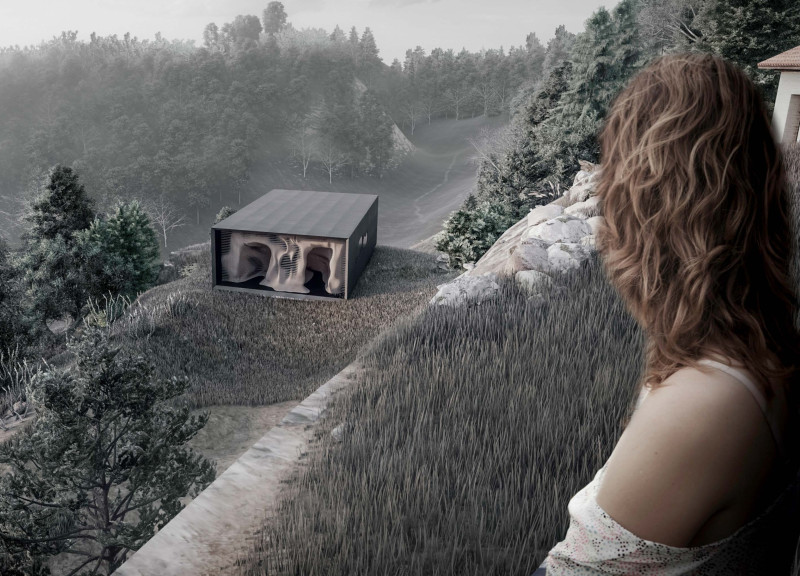5 key facts about this project
The Vale De Moses Meditation Cabins are located in a calming natural setting designed to support therapeutic experiences. The cabins invite visitors to engage with the architecture, making it a key part of the relaxation process. This thoughtful design concept merges the environment and human experience, enhancing opportunities for introspection and meditation.
Spatial Organization
The layout of the cabins encourages visitors to move forward, creating a journey through spaces that are meant to evoke specific feelings. Each area is planned so that guests do not return to previous spots, reinforcing a sense of solitude and deep contemplation. The arrangement includes separate entrances for guests and therapists, supporting personal reflection and minimizing unnecessary interactions.
Emotional Engagement
Every space within the cabins has been crafted with intention to elicit distinct emotional responses. This approach guides visitors through their experiences, making the journey feel dynamic and engaging. The variation in spaces fosters curiosity and encourages individuals to connect with their surroundings on a deeper level.
Materiality and Cultural Context
The design showcases Soft Portuguese Style Architecture alongside intricate wood-carving, reflecting the craftsmanship traditions of the region. While detailed materials are not specified, the emphasis on texture and form is clear throughout the design. Drawing from local heritage, the architecture aims to resonate with visitors and enhance their experience within the cabins.
Sustainability Considerations
Sustainability is an important aspect of the cabin design, particularly through the use of efficient air and water systems. This attention to resource conservation aligns with the primary goal of promoting wellness and mindfulness. The structures are designed to blend with the natural environment, contributing to a sense of calm that visitors can appreciate.
Visitors approach the new therapy cabin gradually, as the building reveals itself against the landscape. This gradual interaction creates a connection between the architecture and its surroundings, encouraging a deeper engagement with the space and the peaceful experience it offers.






















































